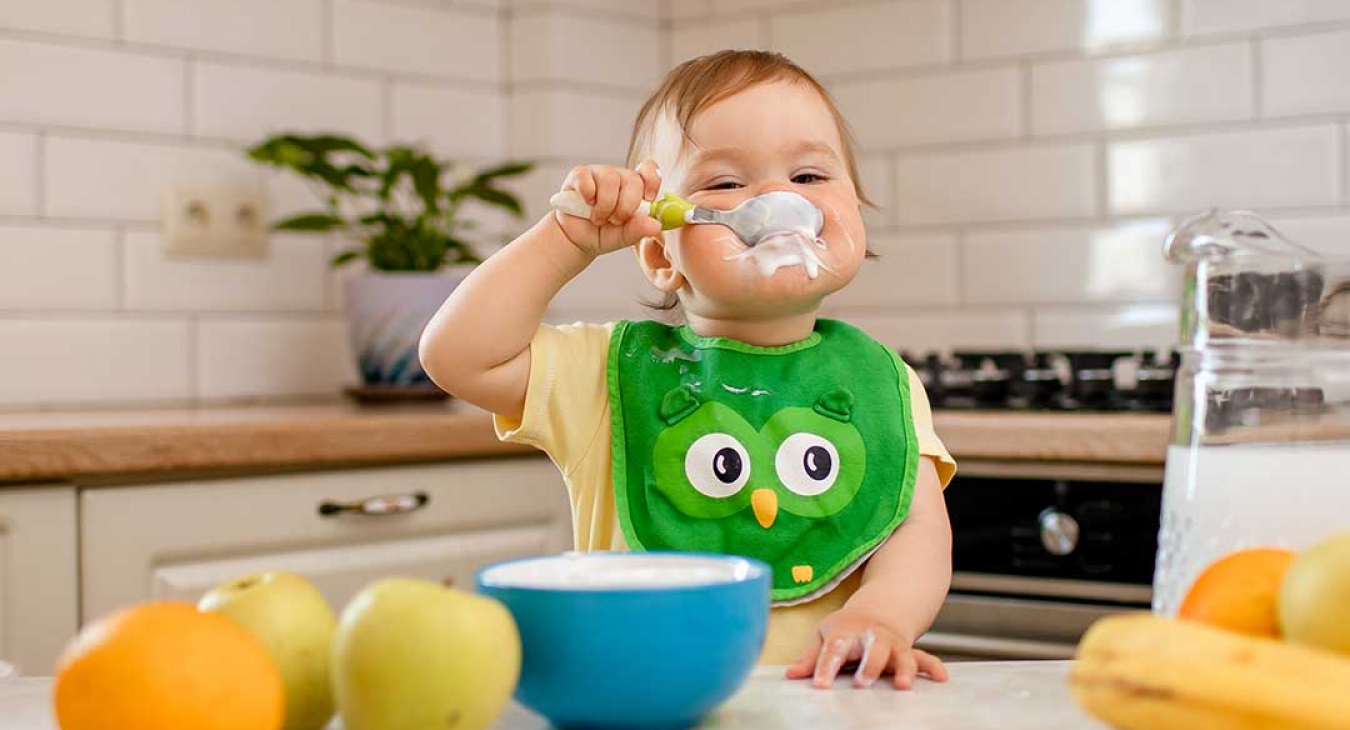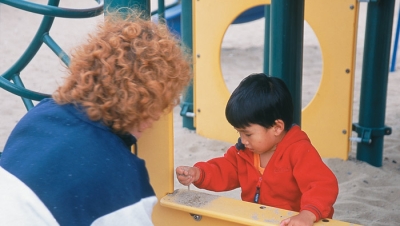Encouraging your baby to self-feed at 10 to 12 months
Your little ones are more likely to be turning into an experienced eater by the time they are almost one year old. Your toddler can now sit comfortably in the high chair and will be using his hands a lot more.
The little one at that age has mastered the so-called ‘pincer grasp’ - he now can hold small items between finger and thumb. When your baby starts to reach for the spoon to help get the food in... you should bear in mind that with this new skill, the baby starts to refuse the food often, or even throw the whole prepared food on the floor.
This can be a very challenging stage, but it's an important one, you have to encourage your baby to feed himself with his fingers or by a spoon. Understandably your little one won't eat always much, but it's a great way to teach him independent eating skills because those will serve him in the future too.
Self-feeding with cutlery
When you start encouraging your toddler to feed himself, one of the best ways is to use sticky foods like oatmeal or mashed potato. The food will cling to the spoon and can make it easier for the baby to get a mouthful before it all slides off.
Filling the spoon and then offering it to the baby is one of the ways you can encourage self-feeding.
Try to relax, as his sense of achievement for feeding himself will outweigh his inconvenience of taking casseroles of the board or wall; making all the place mess is a stage you can't avoid.
If you are concerned that he is not eating that much, try using two spoons, one for him to hold, and one for you to load the food while he is trying to eat by himself from the bowl.
When you are trying to teach your baby to be familiar with the cutlery - the chunkier and clunkier the better. Even if your baby doesn't want to feed by himself, he will love to chew the spoons.
While some parents prefer to use a long spoon to feed the baby, a shorter one with an angled head will make it easier to feed him.
One thing you should know is that you need to choose child-friendly bowls for the feed - a bowl with a sucker on the bottom will stick to the high chair and can make it easy for the baby to get at his food without having to chase the dish around. This is a perfect idea limiting the throwing of the bowl when he gets annoyed and bored!
Finger foods for self-feeding
Now that your baby has more teeth, finger foods can really be handy at this point. With more teeth and better reflex skills, that means that is time to start introducing a wider variety of flavors and textures. Crunchy foods like breadsticks, toast, rice cakes, and cereals are ideal food for your baby. You can also try to feed the baby with cucumber sticks, meatballs, cooked pasta, and even fish fingers. As your baby gets better at feeding himself, you may be able to introduce him to a daily finger food meal.
Using a cup
Many experts recommend removing your baby off bottles at around 12 months to avoid damaging his teeth - so, at this stage, it’s a great idea to make sure you teach your baby to use a cup to drink water or milk. There are a lot of options to choose from with baby-friendly features. You may need to try different kinds before you find one that your baby can drink from easily.
Good role modeling
The best way to encourage your little one to feed himself, you have to eat together as a family - this way, he could have a chance to see others using cutlery, and may encourage him to be like Mummy, Daddy, or his siblings. Sharing mealtimes is fun, and babies are somehow 'forced' to choose up on what everyone else is doing and eating.






Add new comment